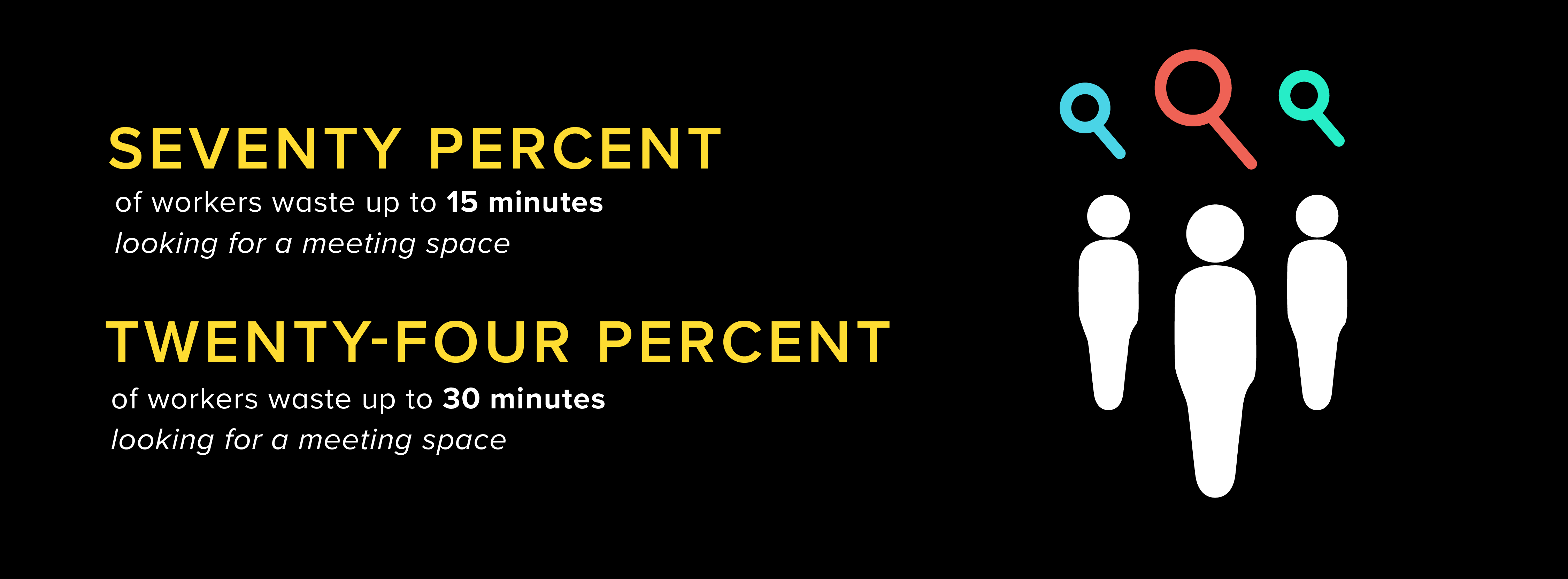Workplace Productivity in the IoT Age
Smart technology used inside smart buildings can eliminate wasted time and improve collaboration. But it also engages employees by providing better workplace experiences.
Organizations that take productivity seriously, know smarter machines are key to unlocking greater returns from human capital. So says Michael Schrage, a prolific author on the subject of innovation and a research fellow at the MIT Sloan School’s Center for Digital Business.
We agree: smart technology enables people to work smarter and more efficiently. Applied in a smart building context, it gives people tools to carve out the time and space they need for their work within a busy office setting.
Think about a large enterprise with a campus-style head office where thousands of employees work or visit on any given day. Amenities are provided — onsite cafes and food zones, gyms, dry cleaners, casual meeting and collaboration areas — yet how employees use those spaces needs to be optimized to ensure the investment is accomplishing its desired goals.
Find time by eliminating wasted minutes
It’s incredibly frustrating to discover that the meeting space you booked is occupied by another very important meeting, leaving you to roam the halls with your team in search of another spot. Smart technologies are designed to save people time around booking shared workspace and meeting rooms by understanding occupancy. You can eliminate squatter’s rights or disagreements over meeting spaces, and easily help people locate available seats and submit booking requests based on whether a space is in-use. This also makes it easier for remote workers or visitors working onsite to find and reserve a workspace in unfamiliar territory.
The time savings adds up when you consider that research from Steelcase (a global leader in office furniture and design) shows 90 percent of workers waste up to 30 minutes looking for a meeting space. No need to search when you can do something else until you’re automatically notified that a meeting room or desk has become available.
In fact, you can use that time waiting for your meeting room to grab coffee or an early lunch if a Smart solution also tells you how busy it is at the onsite cafe. Smart workplace solutions like InnerSpace’s use location intelligence to surface current and predicted wait times based on traffic patterns and historical knowledge of the indoor space. It’s simple for people to text, query Slack or go online to check wait times at their campus Cafe to better plan their meals throughout the day.

Collaboration made simple
Today’s connected environment has made it common for companies to offer remote work options, or to hire teams around the world to offset labour costs. Even so, team co-location in a single office is still the most accepted workplace model. Nothing beats the effectiveness of turning around and asking your coworker a question.
A quick face-to-face conversation is often the thing that keeps a project moving and sparks creativity, this is just not possible in a virtual environment. Yet collaboration does not happen immediately — it takes time to establish relationships and trust among team members.
Smart workplace solutions simplify team collaboration by helping to reduce friction points. Chat apps and email are table stakes. We’ve moved beyond that with apps that use location data to map which teams work together and where. This allows more flexibility and supports more fluid co-working arrangements, which is a growing trend among enterprise organizations.
Schrage points out that in today’s workplace, effectively collaborating with technology is as important as effectively collaborating with people. Indoor location platforms and artificial intelligence make it simple to query a system for information. For example, with indoor location and Slack you can locate the closest printer, find out where your colleague is, or determine the fastest route across campus to a meeting. You can even ask Slackbot if you have time to stop and grab a coffee on the way.
How would you change your workplace if your building was smarter?
Accurate space utilization data through Wi-Fi?
We'll prove it to you.
See why industry leaders leverage InnerSpace to generate valuable insights that go beyond occupancy.

